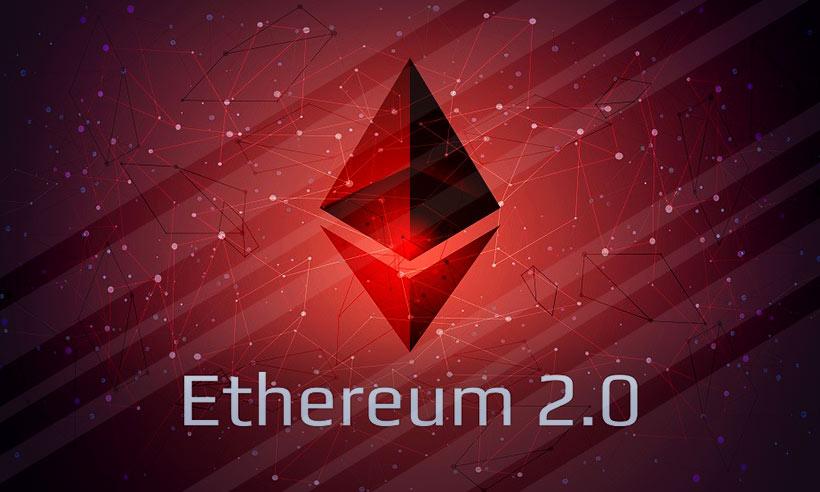ETH 2.0: Is the PoS Transition Going to Boost Ethereum's Transaction Throughput?
The low transaction throughput in Ethereum has been more noticeable, especially as the network continues to grow. When the DeFi space came, transactions became harder and took longer to complete. Later joined NFTs, and the traffic around Dapps continued to make problems even bigger in the network. Ethereum effectively became a very slow blockchain, and gas charges soared.
ETH 2.0 Brings High Throughput
Considering that Ethereum is the second-largest crypto and the most prominent host of decentralized applications, this 15tps is too low. To solve the problem, Ethereum announced the coming of ETH 2.0. One of the benefits of the beacon chain is massive transactions per second. In fact, according to reports, this Ethereum L1 chain will be able to support at least 100 thousand transactions every second. So, how is this high TPS going to be achieved?
Sharding on Database Level
ETH 2.0 will introduce a sharding feature to the blockchain level to achieve the high TPS. Sharding refers to breaking down the entire database into smaller parts that can operate independently. The shards or small partitions can independently host blockchain activities. Shards are also interoperable, meaning they have auto-synchronization. If one shard malfunctions, the other can host all the services.
These shards can work on different activities but keep the entire system updated. Ethereum 2.0 has 64 shards, almost like having 64 small blockchains. Each of the small blockchains is optimized for completing transactions and other blockchain-related activities.
All Ethereum network activities are distributed into 64 different chains to achieve the highest speed. You can attain high processing power since all these shards are running concurrently. Moreover, since shards are smaller blockchains, they are easily manageable by validators.
Keeps Less Records
The current ETH PoW blockchain has to keep long records of transactions which often takes a lot of space. Think of the transaction details on Ethereum from the first block in 2015. Indeed, the blockchain currently stores massive amounts of data. In PoW, proof of past transactions is highly relevant for the next release block.
The blockchain spares space that deals explicitly with new transactions by implanting sharding. The network nodes can be distributed to a different section of the chain or several shards. One shard can be tasked with keeping historical records while another deals with transactions.
No Miners, Here Comes Validators
Another issue causing problems within the Ethereum project is miners. Ethereum's current chain uses proof of work to release new coins, meaning miners are involved. Mine is a complex process involving massive resource usage and high computational demands. In mining, the miners are the ones who authenticate and validate transactions.
But with mining requiring massive resources to complete one block, the entire processes within the network are effectively slowed down. Moreover, miners in Ethereum used to keep transactions waiting in line so they could earn more significant gases. Miners often first deal with transactions that offer more significant gases.
But, staking is a quicker process. Validators authenticate and validate transactions to ensure they are genuine before adding them to the blocks. Unlike mining, PoS requires relatively lower resources. Hence transactions will not take too much time in line.
By changing from PoW to PoS, the network saves resources that will be used in releasing transactions, making them very fast. Moreover, PoS ends the terrible habit of miners keeping transactions in line to gain more gases.
Zk Proofs plus Sharding
At the heart of Ethereum 2.0 will be Zk Proofs. Some current layer two solutions using Zk rollups have offered faster transactions at lower gases. According to reports by Vitalik Butrerin early this year, ETH 2.0 will combine ZK proofs and sharding.
ZK proofs ensure that investors can validate blocks without providing a long history of blockchain data. Essentially, the proofs can compress data, reducing the amount of data passing in the chain and removing strains from the networks.
Using Zk proofs, fewer data will be required for the next block to be created. Combining a sharded blockchain with Zk proofs will ensure the blockchain offers the most optimal TPS, targeted to be 100k.
Will ETH 2.0 Bring More Throughput?
The simple answer is YES; ETH 2.0 comes with more throughput. Eth 2.0 developers mentioned that this beacon chain would attain a top TPS of 100 thousand transactions.
Several features are built within this blockchain that will help attain a high TPS. Among the features include sharding and Zk Rollups. The network will combine the Zk rollups with sharding to ensure transactions attain high speed.
Moreover, by using PoS, Ethereum will protect investors from the slow network speed caused by the miners. Miners can no longer delay transactions to make more gas.

